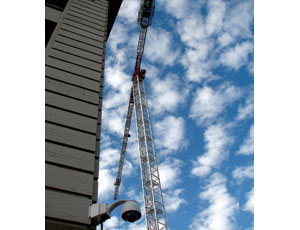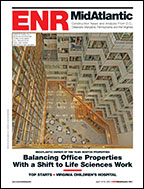The construction industry in Washington state is unprepared to meet a new rule that will require about 10,000 cranes to be inspected by Jan. 1, 2010. The new rule also requires operators to pass a state drug-and-skills exam.

“Crane operators have been busy,” says Hector Castro, a spokesman for the state’s Dept. of Labor & Industries. “The lag has been with the cranes themselves.” So far, only 700 out of an estimated 10,000 cranes affected by the new rule have received operating permits, he says. As of Dec. 16, about 2,000 operators had passed the exams and received licenses.
Under the new rule, cranes of at least one ton of capacity—along with their operators—will need a special state license to work on a construction site. The crane inspection must be carried out by a licensed inspector who has passed the new state exam. The state’s tests were developed in a partnership with Fairfax, Va.-based National Commission for the Certification of Crane Operators.
“It is not at all unusual that there is ramp-up time with these sort of ground-breaking safety initiatives,” says Graham Brent, NCCCO’s executive director.
On Jan. 1, Washington will become just the second state in the U.S., beside California, to require operating licenses for cranes and their operators. The rule came after a deadly crane collapse in Nov. 2006 in Bellevue. A state probe found the crane’s nontraditional base, though engineered, was not inspected by an independent expert prior to use on the site. Evidence brought into civil litigation with the victim’s family also called into question the sequence in which the crane was tied into the building.
The new rule requires mobile and tower cranes to receive a top-to-bottom structural and operational inspection at least once a year by a licensed expert. Federal rules require an annual inspection but do not require the inspector to be licensed. California began requiring inspections after a deadly crane collapse in San Francisco in 1989. Investigators found that a poorly trained crew unwisely rotated the crane while climbing it. The crane also had preexisting structural cracks. In 2005, California began licensing operators.
“There are some crane operators and owners who may not be aware that they are covered under this new rule,” says L&I’s Castro.
Meanwhile, national crane supplier Lewis Equipment Co. has settled a lawsuit with L&I after regulators shut down three of its cranes in Seattle last year due to mismatched tower sections, unclear electrical markings and other deficiencies. Lewis was also fined for a lockout/tag-out violation. “We suffered irreparable harm over that whole deal,” says Bob Reitz, engineering manager of the Grand Prairie, Texas-based crane company, which is now in federal bankruptcy. He says Lewis had mixed tower sections because of rental bottlenecks. “Everybody was so busy,” Reitz explains. “We were running at 100% utilization and running short of towers.” As part of the settlement, Lewis has agreed to pay the state $5,600 in fines.



Post a comment to this article
Report Abusive Comment